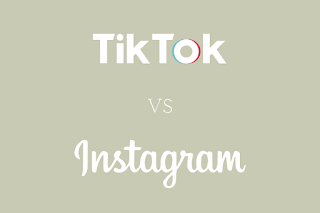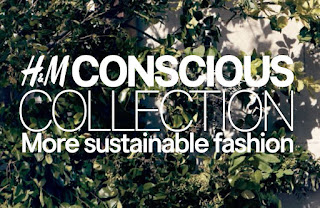TikTok vs Instagram: Which is more unsustainable?
However, what happens when these apps get a little too connected to our lives? Businesses and creators use these apps to promote shopping to an extreme. Whether it’s a large creator wearing an outfit that starts trending or a small creator posting a shopping haul, these apps can be very influential over our shopping habits.
Though both apps promote unsustainable shopping habits, which app is worse? Here’s a breakdown on both.
TIKTOK
Like everyone else these past few years, TikTok has been the most used app on my phone. I can easily spend hours mindlessly scrolling through random 30 second videos.
TikTok’s algorithm is amazing in how it’s personalized to each user. But what happens when that user watches a video showcasing a shopping haul? Or the user is told they need to have this piece of clothing? For those of us that have a hard time with not shopping, this can throw us on an endless loop of wanting to buy everything we see on our For You page (fyp, for short).
Let’s go into a deep dive on how these kinds of videos are detrimental to our sustainable efforts.
The hashtags on shopping haul videos are one of the main reasons they show up on our fyps. #shoppinghaul alone has 5.4 billion views. Following close behind is #sheinhaul with 4.4 billion views. These videos are extremely popular among TikTok users, which shows how extremely popular unsustainability is as well.
What’s so dangerous about these hashtags is that once we like one or two videos with one listed in the caption, we see them all the time. As we continue to interact with them, we see more and more. I won’t lie, part of me loves watching these videos. I feel like I can live vicariously through these users buying $900 worth of clothes at Shein. But the other part of me wants to live like these users and buy just as much as they are.
What’s even more dangerous is creators dedicating their entire account to posting shopping hauls. A lot of users will only post videos of themselves going shopping, opening packages, telling us what “must-have” items we need to have in our lives. Because of the popularity this topic has, they amass millions of followers, which spreads their videos to more people, and the cycle continues.
While some creators promote shopping at thrift stores, some creators promote spending hundreds of dollars at fast fashion brands like Shein and H&M, making it seem harmless when their business practices deeply harm the environment. Sales for these brands have skyrocketed in the past few years due to the (essentially) free marketing they receive from TikTok users.
These creators and businesses are incredibly persuasive in their tactics. They truly make it seem like we have to buy these clothes in order to feel as happy as they are, or seem as put together as they are. Especially to the young audience on TikTok, this is very influential and teaches them negative shopping habits (along with fueling ours). Big accounts that promote shopping hauls get brand deals, which entices their followers to buy even more from these terrible brands.
While TikTok promotes the most unsustainable shopping behavior, Instagram started the trend of promoting unsustainable shopping. With the rise of influencers from the app, more and more people were persuaded to buy clothes they saw on the gorgeous people they followed in an effort to look more like them.
Influencers and celebrities had (and still do have) intense power over the way we shop for clothing. With the millions of followers these users have, they can showcase clothing or promote their discount codes with fast fashion companies to more people than ever before.
Businesses also promote people buying their products by showcasing them on their feed. If a user posts a photo of them wearing a specific brand and tags them, that brand may post them on their own feed–which is a major incentive for a lot of people. Who wouldn’t want a cute photo of them reposted for thousands to see? This gets especially dangerous with Instagram’s shopping feature, which allows you to make purchases directly on the app. You can see a cute shirt and before you know it, you’ve already put it in your cart and bought it without leaving Instagram. This makes it easier for fast fashion companies to not only market to us effectively but persuade us to make that impulsive purchase immediately.
Even if you avoid TikTok, you can still scroll through hours of videos through Instagram reels. Most users just repost what they’ve already posted on TikTok to cater to their audience on Instagram. This means that those of us who know how enticing TikTok can be when it comes to unsustainable shopping can’t actually escape it when those same videos are circulating through Instagram. Is there ever a way to avoid these videos altogether?
WHICH IS WORSE?
Though Instagram was the blueprint, TikTok by far promotes the most unsustainable shopping habits. Their algorithm makes it almost impossible to avoid these videos completely, especially if you’ve been on the app for a long time like I have. I still see shopping haul videos almost every day because of how often I watched them before I made a commitment to be more sustainable.
As you should be with shopping, try to be more mindful with the content you consume. We don’t always recognize how much influence the apps we use have on our lives. If you feel pressured to buy clothes you know you don’t need, scroll away. It’ll be hard at first, but it’s so important that we make these changes now.





Comments
Post a Comment